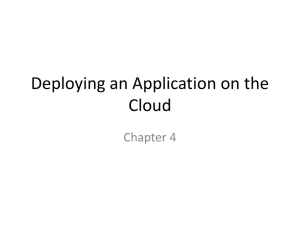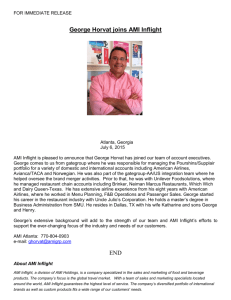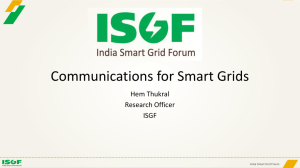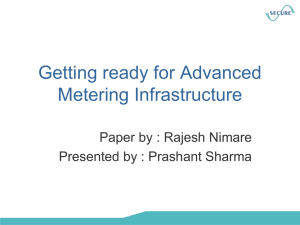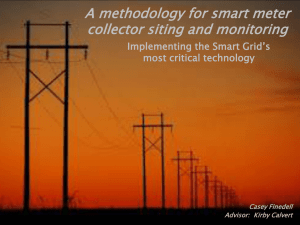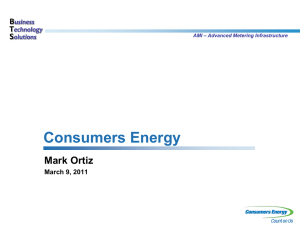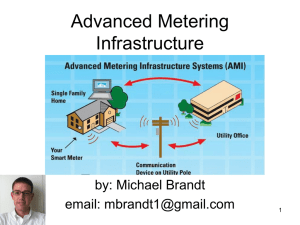Distribution Automation Using AMI Communications
advertisement
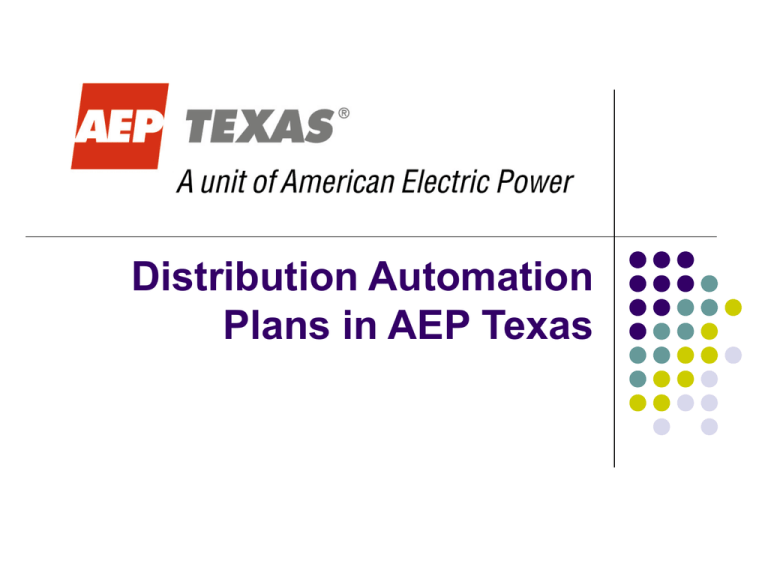
Distribution Automation Plans in AEP Texas Overview AEP Texas is deploying smart meters to roughly 1,000,000 customers The meters utilize Landis + Gyr UtiliNet radio technology UtiliNet mesh network requires regular placement of routers on utility poles throughout the system Routers can be used for more than strictly AMI traffic If they’re there, why not use them? Very limited in scale and scope so far Deployment Total of twelve smart switches deployed so far Installed in sets of three Locations: Two sets in San Angelo, one set in Abilene, and one set in Corpus Up to ten additional locations (30 additional smart switches) may be chosen before the end of 2011. They will most likely be deployed in the Rio Grande Valley, Corpus Christi, Laredo, Victoria, Abilene, and/or San Angelo. Organizational Responsibilities Reliability Engineering: Selects location, performs studies as necessary, program the devices AMI construction group: Installs routers for AMI deployment Information Technology: Creates the links between the UtiliNet system and SCADA Dispatch: Operates and monitors the status of the devices Switch Specification Using S&C IntelliRupter 15.5kV models to support our mostly 7.2/12.47kV system Interrupting rating: 12500A Continuous current rating: 630A Uses “pulse closing” technique Standard reclosing could be used for fuse saving strategies, but we’ve opted not to use it Ensures less damage to distribution equipment by limiting the amount of energy in a fault Switch Specification (cont’d) Modular communications Vendor installs Landis + Gyr UtiliNet module SpeedNet and other radios available and possible for future use Communications infrastructure UtiliNet mesh network Very scalable, but not very high bandwidth DA takes much higher priority in signals than AMI Proprietary UtiliNet signals converted at station to DNP3 for SCADA master control device Latency is expected to be measured in seconds as opposed to milliseconds or minutes Mounting/Installation Switches are mounted on 45 ft, Class 3 or better poles Only overhead installations on wood poles so far No location restrictions beyond engineering judgment Everybody knows of the story of the switch right next to a drainage ditch… AMI routers must generally be installed in an area before DA schemes are installed Maintenance S&C IntelliRupters have a life span of about 30 years or more Batteries should be replaced on a 5 year cycle Bypass switches are installed on both load and source side Thus far, testing is performed live Modular communications and control module Control module can be accessed via Wi-Fi for programming and to check error logs AMI Integration Leaning heavily on AMI communications system Communications to the substation shares routers and protocols with AMI system DA gets top priority in communications along mesh At the station, switch signals are translated to DNP3 and sent to the SCADA master control device Switches do not communicate directly with meters UtiliNet mesh latency would be too high for something like this to work Safety For loop-automation, the “middle” device must be placed into non-reclose mode before work begins A non-reclose order or hot line tag may be used on the source side device as well The S&C IntelliRupter has an interlocking visual open To accommodate contractors/out-of-town crews, dispatchers will let crews know they are on an automated system when they logon Operations Real-time visual representations of the status of the devices (open/closed/non-reclose/etc) are provided via SCADA Also allows remote control of functions – can be overridden by field using physical levers Non-switch smart nodes (such as intelligent volt-var controls) are not anticipated at this time Operations (cont’d) Alarm points are used on abnormal switch state Outage tickets are still manually generated by dispatchers Switches can be used to gather outage information, isolate faults, and re-energize the line – similar to breakers using SCADA Due to the limited scope of deployment, switches will only be marginally useful in load estimation and planning functions Budgeting/Cost Recovery Costs of systems is broadly imbedded in rates until a more timely recovery mechanism is in place Limited scope of projects means no special projects have been created; they are lumped in with general sectionalizing and reliability budgets AMI communication devices (routers) are paid for by smart meter surcharge, and AMI remains their primary function DA is along for the ride! One Caveat Some of the equipment may not stand up to highly corrosive environments…. Installation was on North Padre Island, only a few months old ALL future installations will use our own external disconnects Questions?


